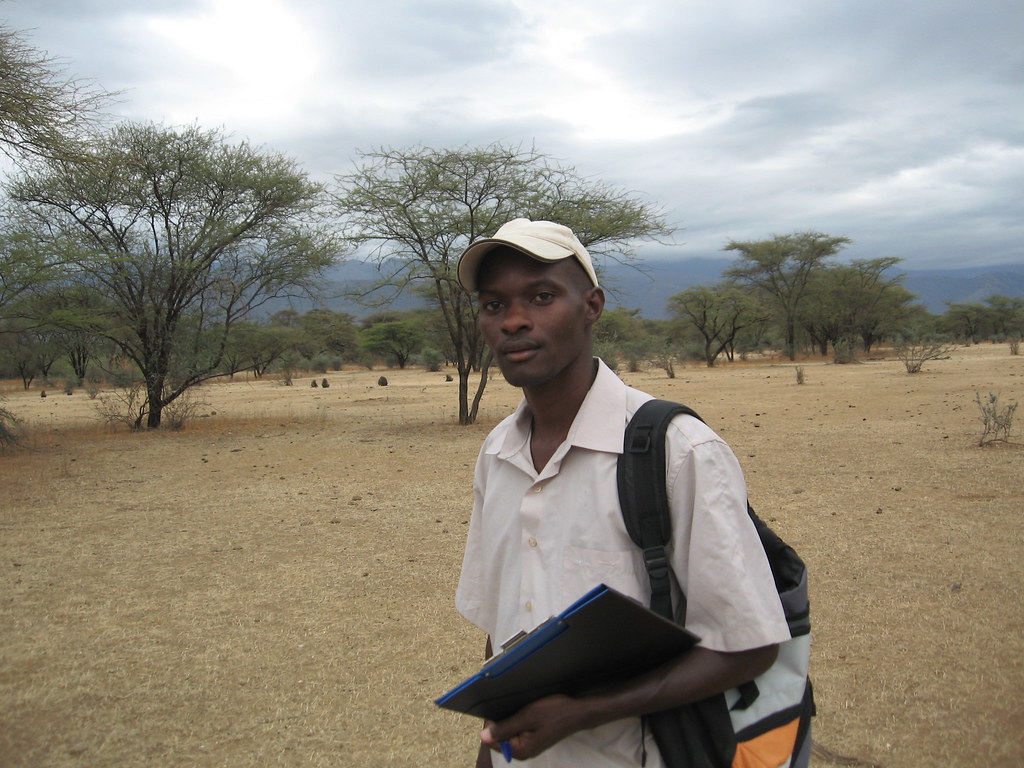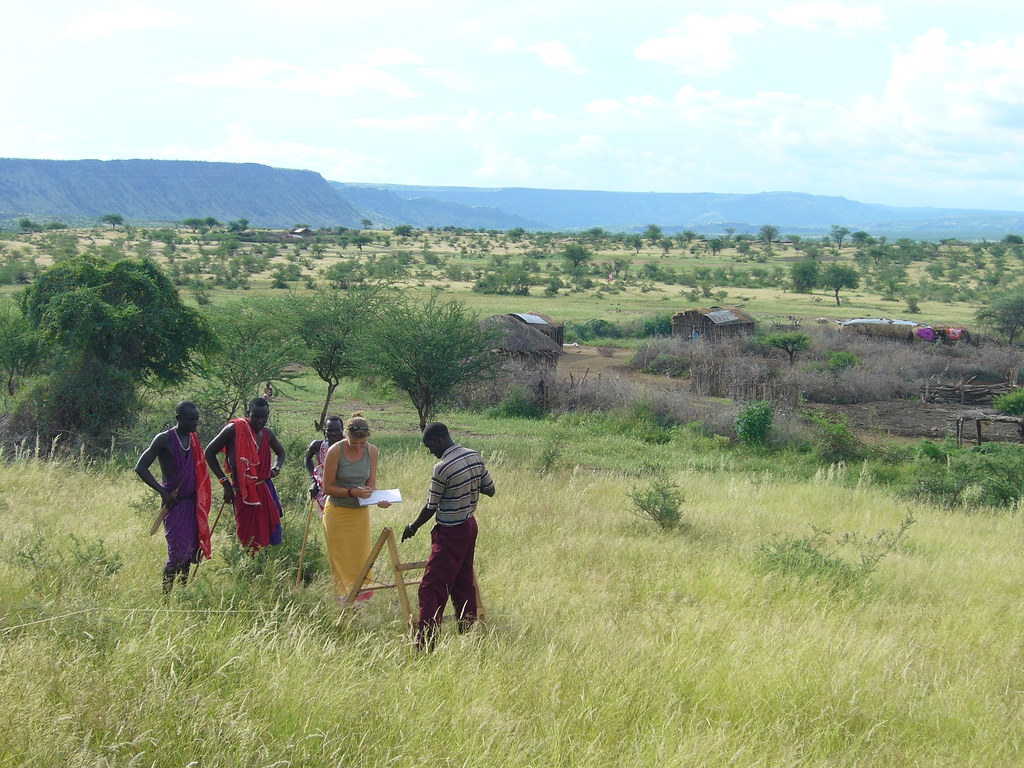

Report on the Impact of the 2009 Drought on
the South Rift Valley Ecosystem
and Comparison to the Amboseli Ecosystem
December 23, 2009
by Samantha Russell
African Conservation Centre
South Rift Association of Land Owners
DROUGHT PROFILE
The savannas, swamps, and forests of Kenya’s South Rift Valley are home to traditional pastoral people and their livestock as well as an abundance of wildlife. Recently however, it has experienced the same severe drought as other regions across Kenya, with largely failed rainy seasons over the past two years.
The drought began to impact wildlife at the beginning of this year (2009). By May many of the juvenile plains game, particularly the wildebeest, were dying. Buffalo, zebra, and adult wildebeest then were reported to be dying in small numbers across the region. As the months progressed, the wildlife began to increasingly reside in and next to the main Shompole swamp, and down toward Lake Natron, where there is still forage available. This applied to most species with the exception of giraffe and Grants gazelle, which have remained spread out across the ecosystem. However, although the drought was apparent in its effect on wildlife populations, it was far more apparent in its devastation of livestock, in particular cattle.
Traditionally the Maasai of both Shompole and Olkiramatian group ranches move seasonally with their livestock, following available forage. During the rainy seasons, they move to temporary settlements to the east of the group ranches, away from the main Ewaso Ngiro River and the community conservation areas. Here they access good grazing and temporary water sources such as pans and dams. As the area dries out, on the go-ahead from the Group Ranch committees, they start to move back to settle along the river and graze westward, up toward the Nguruman escarpment and by late dry season and during droughts, they have access to the conservation areas, which act as “grassbanks” or forage in reserve.
However, 2009 has been the year where all traditional systems and coping mechanisms have broken down, to an extent not seen before by the people living there. People have not left the river settlements en mass as usual, but can be seen making individual decisions about where to move. Movements have been erratic and desperate, some choosing to take their herds far into Tanzania, while others try their luck north of the group ranches, moving to the Maasai Mara, or simply keeping smaller herds on their small-holder farms. Cattle from as far away as Kajiado moved in to Shompole to add to the pressure on resources. Despite extreme levels of effort and investment (manpower, drugs, and extra food for the livestock), most people have lost over 90% of the cattle to date. These losses span across the community, whether wealthy or poor, whether they chose to move far or not. For quick cash, many families are now selling their sheep and goats, which for the most part survived the drought, but now are unsure if they will have any livestock left at all. Some families are so desperate that elders are committing suicide by drinking poison. For pastoralists, this is indeed a transformational drought. The culminating effects of large numbers of stock on the land, high dependence on these stock ,and cumulative droughts have spelled disaster for so many, and left them wondering what the future of their proud culture will really be.
FOR FULL REPORT INCLUDING PHOTOGRAPHS AND DATA PLEASE VISIT
http://www.amboseliconservation.org/amboseli-drought-2009.
COMPARISONS WITH AMBOSELI
As illustrated in David Western’s recent article on the impact of this drought on the Amboseli ecosystem (http://www.amboseliconservation.org/amboseli-drought-2009), wildlife populations, particularly the wildebeest and zebra, in the Amboseli ecosystem have collapsed over the past few months, on an unprecedented scale.
‘Nearly 15,000 animals have died of starvation since early this year. Wildebeest numbers fell from over 6,000 to fewer than 150, zebra from some 7.000 to 1,500 and buffalo from 600 to 185. Large numbers of elephant and many hippos have also died. Most of those losses occurred the three months between September and November. The proportional losses are among the biggest recorded anywhere in recent times… The Maasai, realizing the severity of drought, moved their cattle herds as far as Nairobi, Naivasha and the coast in Kenya, and into neighboring Tanzania. Despite the huge exodus in search of pasture, questionnaire surveys conducted by the African Conservation Center and ACP put the cattle losses among pastoralists in the region at 75% or more.’ (D. Western, December 4, 2009).
David Western illustrates that the causes of the mass mortality in Amboseli stem from a long-term decline in habitat diversity (with the woodlands and swamps declining in abundance and forage in particular), a build-up in grazing animals, the steady depletion of swamp grazing, a severe shortage of rain in 2008, and the failure of the long rains in 2009.
By the same token, it is the high habitat diversity, in particular the large swamp and abundance of woodland and bushland, that has saved the South Rift wildlife populations (and the sheep and goat populations) from suffering the same fate as those of Amboseli.
In both areas, cattle make up the largest proportion of biomass on the land, or did. In both regions, despite the mass movements between and across the Southern Rift area and beyond, reports of cattle mortality are severe. A more accurate comparison will be possible when the remaining herds return to both regions. It is clear though that livestock did not escape the fate of the drought in either area.
It appears that the South Rift population of the sub-species of wildebeest (Eastern white-bearded) found in both ecosystems may well now be the largest in the entire region. As those involved in the rehabilitation and future of Amboseli decide on what to do, they may well look to the South Rift for possible solutions.
REPERCUSSIONS
Ecological:
Recruitment for wildlife populations will take some time, given the loss of all the juveniles, but given the relatively low losses in general, the population of wildlife should recover fairly soon. Given that there is now fewer livestock in the area, this may mean an expansion in overall wildlife numbers in the coming decade, as the cattle herds take time to rebuild.
Social:
The social repercussions of this drought are already being felt. With the high levels of stress within the community, bitterness and anger as well as increasing poverty has led to such extremes as suicide. In other cases, it has led to family arguments, unfair accusations towards herders (either family or employees), and overall concern about the future of pastoral livelihoods and culture.
Education has suffered; the future of the young pastoralists will become more difficult and uncertain.
Decisions will need to be made from the household level to the group ranch level as to how to move on from such loss and devastation. This may lead to a change in land-use within the area, with more people turning to agriculture to support themselves. This will create more pressure on key resources such as land and water. Increased reliance on alternative sources of income such as wildlife may occur.
LESSONS LEARNED
• Habitat heterogeneity is vital. Maintaining key drought refuges such as swamps and woodlands should be a key conservation priority. Maintaining a balance between key species, such as elephants and people, assists with maintaining this heterogeneity.
• Monitoring of ecosystems is essential to understanding the processes which contribute to their success and/or failure.
• Pastoralism is at a transformational crossroads.
THE FUTURE
Looking forward at a time like this only leads to more questions. As a starting point for discussion the following questions need to be addressed:
• What will the lack of cattle biomass in the ecosystem mean?
• What will be the resulting changes in wildlife numbers, vegetation composition and structure, human social networks and patterns, land use choices and human/wildlife conflict?
• What do we need to make a priority in the South Rift in terms of conservation of resources?








